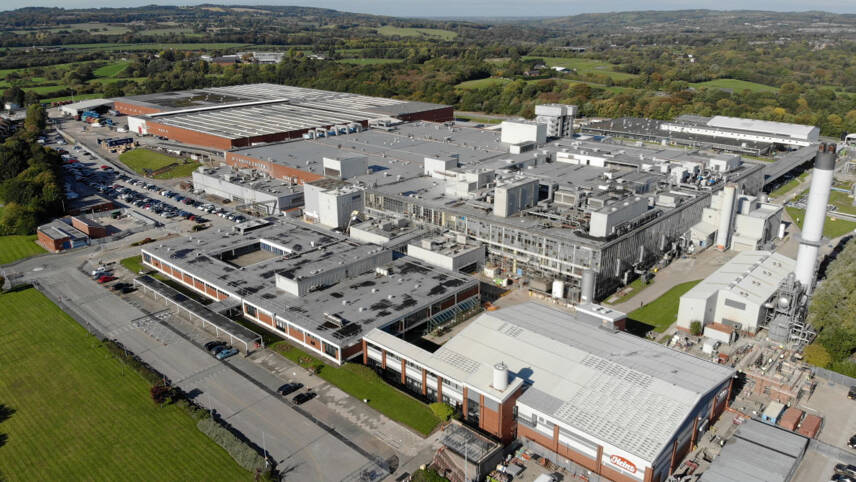Register for free and continue reading
Join our growing army of changemakers and get unlimited access to our premium content

Pictured: The Kitt Green factory complex
The consumer goods giant and the energy developer are hoping to develop a 20MW green hydrogen production facility, where hydrogen will be produced using water electrolysis processes powered by 100% renewable electricity.
This hydrogen would then be used to replace fossil fuels in heating processes at the Kitt Green factory. Kraft Heinz estimates that the proposed project could meet at least half of the factory complex’s natural gas demands, while reducing its annual power-related carbon emissions by 16,000 tonnes.
Kraft Heinz notably has a global 2050 net-zero goal, supported by an interim goal of halving emissions across all scopes between 2021 and 2030.
Subject to planning approval and financing, the hydrogen facility could begin first production in 2026. The next 18 months will see Kraft Heinz and Carlton Power applying for planning permissions and also for financial support through the second tranche of the UK Government’s Hydrogen Production Business Model funding. Consultations will be held ahead of these applications.
Trafford Council Leader and Greater Manchester’s Green City-Region lead Cllr Tom Ross said: “Greater Manchester is making great strides towards achieving carbon neutrality by 2038, but we need everyone pulling in the same direction.
“Businesses and organisations across the city-region have a vital role to play in that effort by moving away from fossil fuels in their operations. That’s why it’s great to see Kraft Heinz and Carlton Power collaborating to drive forward our path to net zero, making Wigan home to Kraft Heinz’s first-ever green hydrogen-powered plant. This represents a long-term investment in green jobs right here in our city-region, and a major boost for establishing a hydrogen economy in Greater Manchester.”
National strategy
The UK Government is aiming for the nation to host 10GW of low-carbon hydrogen production by 2030. At least half of this should be green/renewable, and other projects will need to meet strict lifecycle emissions criteria to benefit from Government funding, called the ‘Low-Carbon Hydrogen Standard’.
The use of hydrogen in hard-to-abate industrial processes is broadly regarded as strategically sound in the UK, due to the potential carbon and cost benefits.
Debate is more fierce, however, about the use of hydrogen in domestic heating. Home heat is easier to electrify than heavy industrial processes and certain kinds of transport but the gas industry is pushing back on any move that would render its infrastructure and base of skilled workers redundant. The UK Government is set to make a final decision on the role of hydrogen in gas networks in 2026.
Related feature: Seven green innovation trends to watch in 2024, from green hydrogen to climate adaptation


Great news, if this project is realised.
Bring on many more projects like this around the UK.
The use of electricity, GREEN ELECTRICITY, is often quoted in edie, but is there any central over-view of the balance between the oft quoted “renewable” electricity usage and the actual amount generated.
Who carries out this function, who makes the running measurement of the actual amount generated, and the actual amount charged for as “renewable”?
In the domestic market, electricity may be purchased on the basis that it is all “renewable”. I see it on my television all the time! But how is the veracity of this claim monitored????
There are occasions when winds, over huge areas, are almost nil; have I reason to be just a little confused?
It should be noted that “green hydrogen” has be produced, hydrogen does not occur naturally as a gas, like methane.
Its’ production uses energy; if this is “green energy” it will be either natural, ie wind, or nuclear. But the natural source is outside our control!!!
And it costs, plenty!!